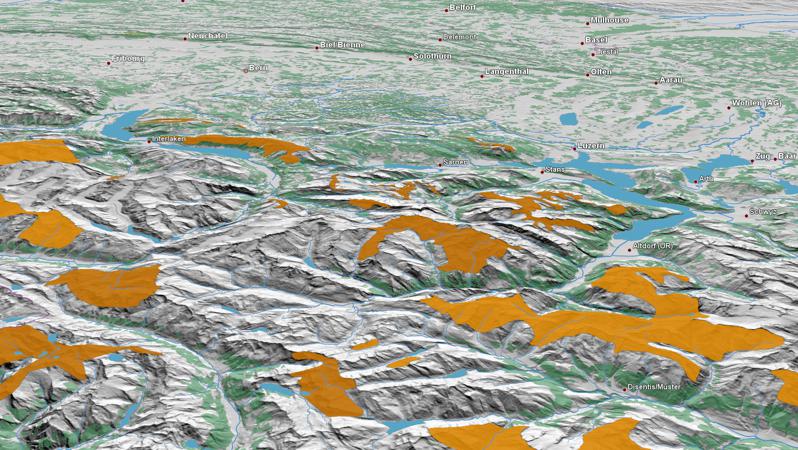Ibex areas of national importance

The Alpine ibex has a massive, stocky body with sturdy legs. Body length is 115 to 170 cm; weight 35 to 150 kg. The male has a short beard. The female is smaller and more delicate. Alpine ibex are easily identifiable for their scimitar-shaped horns that arch across their backs and grow up to 1 m in males. The front edge of the horn has transverse ridges. Each year 1 to 3 new ridges are added. In
Ibex areas
Tags: Landscape and Space, Landscapes/Habitats, Protected areas, Leisure time, Nature conservation
Spatial extent: Switzerland
Time: 2015
Map objects: Albris, Alpstein, Augstmatthorn, Bire-Oeschinen, Blattenstock, Brienzer Rothorn, Brisen, Cadagno, Cape au Moine-Chaussy, Chablais, Chamossaire, Churfirsten, Creux-du-Van, Dent de Lys, Fluebrig-Forstberg-Längenegg, Flüela-Rätikon, Foostock, Gadmerfluh, Gasterental, Graue Hörner, Gross Lohner, Hutstock, Julier, Justistal, Macun-Terza-Sesvenna, Nufenen, Oberalp-Tödi-Calanda, Oberwallis, linke Flussseite, Oberwallis, rechte Flussseite, Olden, Pierreuse-Gummfluh, Pilatus, Rothorn-Weissfluh-Hochwang, Safien-Rheinwald-Adula-Messocco, Schwarzmönch, Spillgerten, Susten-Meiental, Umbrail, Val Verzasca, Valais central, rive droite, Valais central, rive gauche, Valle Maggia-Robiei, Valle Onsernone, Vanil Noir-Bimmis, Wetterhorn, Wittenberg
